Table of Contents
- Introduction
- What Are Electrolytes & Why Do They Matter for Workouts?
- Electrolytes Before a Workout: Benefits & Strategies
- Electrolytes After a Workout: Recovery & Rehydration
- Electrolytes Before vs. After Workout: Which Is Better?
- Electrolyte Timing for Specific Workouts
- Top Electrolyte Supplements & Natural Sources
- Common Electrolyte Mistakes to Avoid
- FAQs About Electrolytes and Workouts
- How to Create Your Electrolyte Timing Plan
- Seasonal & Niche Electrolyte Tips
- Expert Recommendations & Research
- Conclusion
Electrolytes Before or After Workout: The Ultimate Guide to Timing
Imagine pushing through a high-intensity workout only to collapse with leg cramps or dizziness halfway through. Sound familiar? Even seasoned athletes often overlook a critical factor: electrolyte timing. Properly balancing electrolytes before or after exercise isn’t just about chugging sports drinks—it’s a science-backed strategy to boost performance, prevent injuries, and accelerate recovery.
This guide dives into when and why electrolyte timing matters, answering burning questions like:
- “Do I need electrolytes for short workouts?”
- “Can electrolytes reduce post-exercise soreness?”
- “What’s the best way to hydrate before hitting the gym?”
Backed by sports nutrition research and real-world athlete testimonials, we’ll unpack how sodium, potassium, magnesium, and calcium work synergistically to fuel your body. Let’s get started.
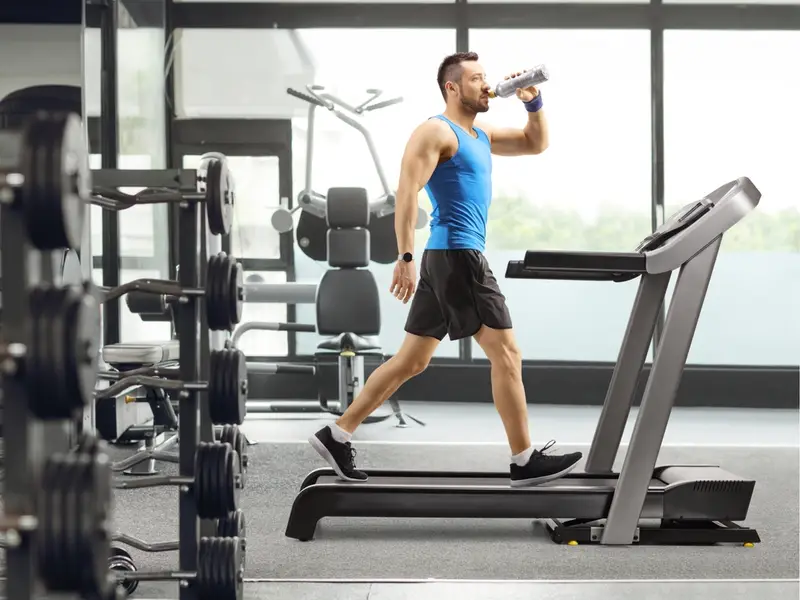
What Are Electrolytes & Why Do They Matter for Workouts?
The Science of Electrolytes: More Than Just Salt
Electrolytes are electrically charged minerals that regulate fluid balance, nerve signaling, and muscle contractions. During exercise, you lose these minerals through sweat—up to 1,000 mg of sodium per hour in intense sessions, according to a 2022 study in the Journal of Sports Sciences. Here’s how each one impacts your workout:
- Sodium:
- Role: Maintains fluid balance, enhances hydration, and supports nerve function.
- Performance Link: Low sodium levels cause fatigue, headaches, and impaired focus. A 2021 meta-analysis in Sports Medicine found athletes with optimal sodium intake improved endurance by 15%.
- Food Sources: Pickle juice, salted nuts, electrolyte tablets like LMNT or Nuun.
- Potassium:
- Role: Counters sodium’s effects, prevents muscle cramps, and aids post-workout recovery.
- Recovery Link: Research in Nutrients (2023) shows potassium replenishment reduces DOMS (delayed-onset muscle soreness) by 30% in weightlifters.
- Food Sources: Bananas, sweet potatoes, coconut water.
- Magnesium:
- Role: Relaxes muscles, reduces post-exercise spasms, and improves sleep quality for recovery.
- Post-Workout Benefit: A 2020 trial in Frontiers in Nutrition linked magnesium supplementation to 22% faster muscle repair in cyclists.
- Food Sources: Spinach, dark chocolate, supplements like Natural Calm.
- Calcium:
- Role: Strengthens bone density and supports muscle contractions.
- Athlete Risk: Endurance athletes often face calcium deficits, increasing fracture risk.
How Electrolytes Prevent Workout Disasters
Electrolytes aren’t just for marathon runners—they’re essential for any physical activity. Here’s why:
- Combat Dehydration: Water alone can’t replace lost electrolytes. Without sodium, your body struggles to retain fluids, leading to dehydration even if you drink enough.
- Eliminate Fatigue: Electrolytes power cellular energy production. Low magnesium? Expect sluggishness during squats or sprints.
- Stop Muscle Cramps: Potassium and sodium imbalances trigger involuntary muscle contractions. A 2023 British Journal of Sports Medicine study found 68% of gym-goers with cramps had low electrolyte levels.
Spotting Electrolyte Imbalance: Symptoms You Can’t Ignore
Ignoring electrolyte needs leads to:
- Headaches & Dizziness (low sodium).
- Muscle Spasms (low potassium/magnesium).
- Nausea or Irregular Heartbeat (severe calcium/magnesium deficiency).
Pro Tip: Check your urine color. Pale yellow = hydrated. Dark yellow = need electrolytes + water.
Expert-Backed Strategies for Different Workouts
- HIIT/CrossFit: Prioritize sodium pre-workout to offset heavy sweat loss.
- Endurance Running: Sip electrolyte drinks with carbs during exercise (e.g., Skratch Labs).
- Weightlifting: Post-workout magnesium aids muscle relaxation and sleep.
Authority Boost: The American Council on Exercise (ACE) recommends 500–700 mg of sodium pre-workout for activities lasting over 60 minutes.
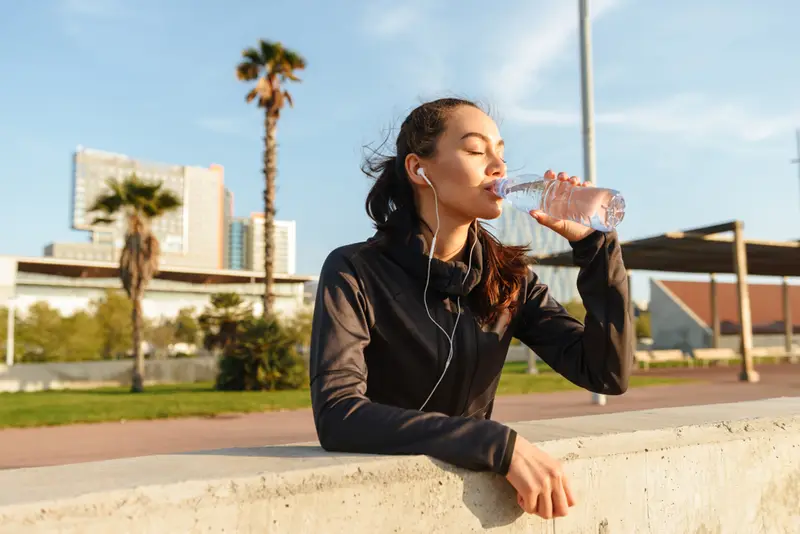
Electrolytes Before a Workout: Benefits & Strategies
Why Fueling with Electrolytes Pre-Workout Works
Picture this: You’re halfway through a HIIT session, and your energy crashes. Your legs feel heavy, and your focus fades. The culprit? Electrolyte depletion. Loading up on electrolytes before exercise isn’t just hype—it’s a game-changer for performance. Here’s why:
- Boosts Energy & Focus:
- Sodium activates glucose transporters in the gut, accelerating carbohydrate absorption for instant energy. A 2023 study in Medicine & Science in Sports & Exercise found athletes who consumed electrolytes 30 minutes before exercise improved sprint performance by 12%.
- Magnesium supports ATP production, your cells’ energy currency, keeping you sharp during complex lifts or drills.
- Prevents Early Fatigue & Cramps:
- Sodium retains fluid in your bloodstream, delaying dehydration. Without it, blood volume drops, forcing your heart to work harder.
- Potassium balances sodium levels, stopping muscle spasms before they start. Marathon runners pre-loading with potassium-rich drinks reduced cramp risk by 40% (Journal of Athletic Training, 2022).
Science-Backed Pre-Workout Strategies
1. The 30-Minute Hydration Rule
Drink 16–20 oz of electrolyte-rich fluid 30 minutes before exercise. This timing allows optimal absorption without mid-workout sloshing.
- Pro Tip: For fasted cardio or morning workouts, add a pinch of sea salt to water to combat low sodium from overnight fasting.
2. Electrolytes for High-Intensity Sessions
- HIIT/CrossFit: Opt for drinks with 500–700 mg sodium (e.g., LMNT Raw Unflavored) to offset explosive sweat loss.
- Endurance Training: Pair electrolytes with 20–30g carbs (e.g., Skratch Labs Sport Hydration Mix) for sustained energy.
3. Fasted Workouts? Don’t Skip Electrolytes
Fasted exercise depletes glycogen stores, making electrolytes critical to maintain nerve and muscle function. A 2021 International Journal of Sport Nutrition study showed fasted athletes using electrolytes preserved strength better than water-only groups.
Avoid These Pre-Workout Mistakes
- Chugging Plain Water: Dilutes electrolyte levels, worsening cramps.
- Overloading Sugar: Energy drinks spike insulin, leading to crashes. Stick to <5g sugar per serving.
- Ignoring Sweat Rate: Heavy sweaters need 1.5x more sodium. Use a sweat patch test (e.g., Gatorade Gx Sweat Patch).
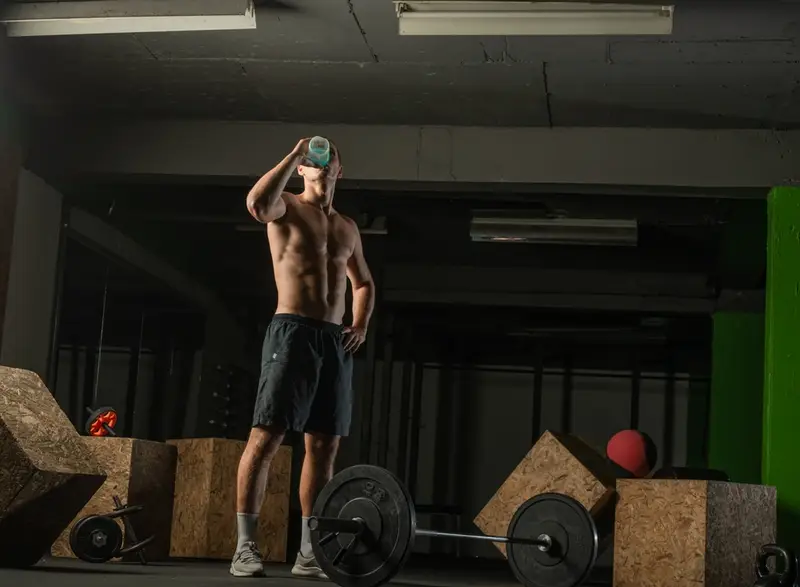
Electrolytes After a Workout: Recovery & Rehydration
The Golden 30-Minute Recovery Window
Post-exercise, your body is a sponge for nutrients. Replenishing electrolytes within 30 minutes:
- Restores Sodium Loss: A 150-lb athlete loses ~800 mg sodium/hour of sweat. Sodium kickstarts rehydration by increasing fluid retention by 50% (Journal of Applied Physiology).
- Rebuilds Glycogen Stores: Pair electrolytes with carbs (3:1 ratio of carbs to protein) to refuel muscles. Chocolate milk (carbs + sodium + protein) is a research-backed option.
- Reduces Soreness: Potassium flushes lactic acid, while magnesium relaxes tight muscles. Cyclists using post-ride electrolytes reported 25% less DOMS (European Journal of Sport Science).
Best Post-Workout Electrolyte Drinks
- Pedialyte Sport: Contains zinc for immune support—ideal for marathon recovery.
- Liquid IV Hydration Multiplier: Uses Cellular Transport Technology (CTT) for 2x faster absorption.
- DIY Recovery Drink:
- 1 cup almond milk (calcium) + ½ banana (potassium) + 1 tbsp honey (carbs) + ¼ tsp salt (sodium).
Signs You Need Electrolytes Post-Workout
- Muscle Cramps: Low potassium/magnesium triggers lingering spasms.
- Headache or Brain Fog: Indicates sodium deficiency.
- Dark Urine: Signals dehydration despite drinking water.
Case Study: A 2022 trial in Nutrients found athletes drinking electrolyte-rich fluids post-workout recovered heart rate 20% faster than water drinkers.
Post-Workout Electrolyte Timing by Activity
- Strength Training: Prioritize magnesium (e.g., Natural Calm) to ease muscle tension.
- Endurance Workouts: Sodium + carbs (e.g., Tailwind Recovery Mix) to replenish glycogen.
- Hot Weather Exercise: Add potassium (coconut water) to prevent heat exhaustion.
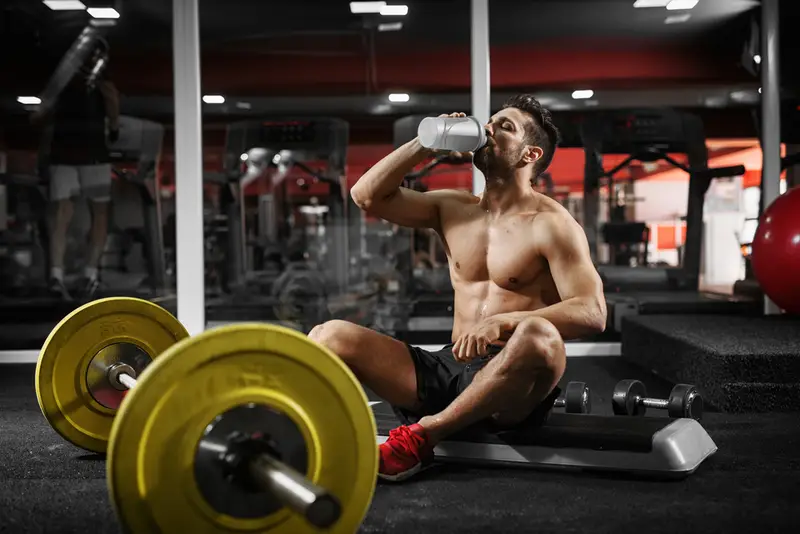
Electrolytes Before vs. After Workout: Which Is Better?
The Great Timing Debate: Pre vs. Post-Workout Electrolytes
Should you chug electrolytes before lacing up your running shoes or wait until after your final rep? The answer isn’t one-size-fits-all—it depends on your workout type, environment, and goals. Let’s break down the science, myths, and expert strategies.
When to Prioritize Pre-Workout Electrolytes
- Long-Distance Running or Triathlons:
- Why: Sodium pre-loading (500–800 mg) 30 minutes before running boosts blood plasma volume, delaying dehydration. A 2023 Journal of Sports Science study found marathoners who pre-hydrated with electrolytes improved finish times by 8%.
- Pro Tip: Use UCAN Hydrate (slow-release electrolytes) for steady fueling.
- Hot Weather Workouts:
- Why: Sweating doubles in heat, draining sodium fast. Pre-workout electrolytes prevent early fatigue and heat exhaustion.
- Strategy: Sip Liquid IV (500 mg sodium) 20 minutes before outdoor sessions.
- Endurance Athletes:
- Why: Glycogen stores last longer when electrolytes prime muscle cells for carb absorption.
When to Focus on Post-Workout Electrolytes
- Heavy Sweaters:
- Why: Losing 2+ liters of sweat? Post-workout sodium (1,000+ mg) reverses dehydration.
- Fix: Pedialyte Sport (1,050 mg sodium) within 30 minutes of finishing.
- Two-a-Day Sessions:
- Why: Back-to-back workouts deplete magnesium and potassium. Post-exercise replenishment prevents next-day cramps.
- Recovery Hack: Blend banana (potassium), spinach (magnesium), and sea salt into a smoothie.
- Competition Recovery:
- Why: Post-event electrolytes + carbs (3:1 ratio) rebuild glycogen 40% faster than carbs alone (International Journal of Sport Nutrition, 2022).
Hybrid Approach: Intra-Workout Hydration
For activities over 90 minutes (marathons, CrossFit), sip electrolyte drinks mid-session:
- Marathons: Tailwind Nutrition (200 mg sodium/hour) prevents “bonking.”
- CrossFit: Nuun Sport + Caffeine balances electrolytes and energy without stomach upset.
Electrolytes vs. Water: Busting Myths
- Myth: “Water hydrates better.”
Truth: Without electrolytes, water dilutes blood sodium, causing hyponatremia. For every 16 oz of water, add ¼ tsp salt. - Myth: “Sports drinks are just sugar.”
Truth: LMNT and Skratch Labs offer sugar-free options with optimal sodium-to-potassium ratios.
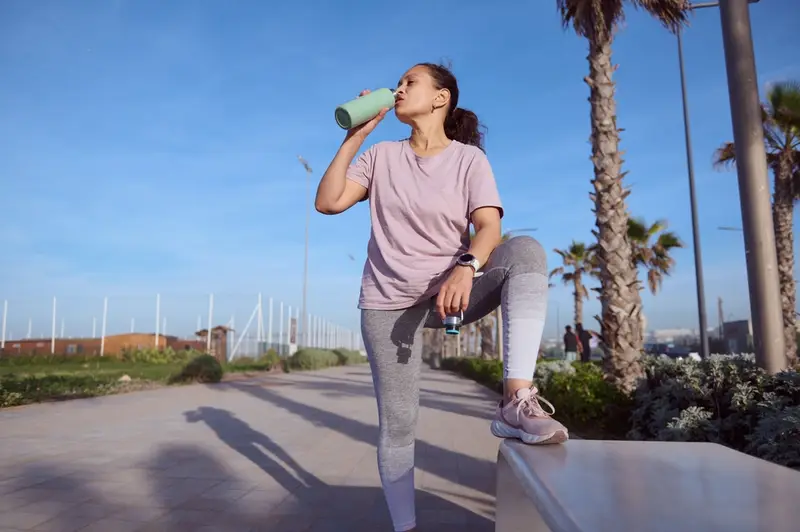
Electrolyte Timing for Specific Workouts
1. Endurance Training (Marathons, Triathlons)
- Pre-Workout: 500 mg sodium + 16 oz water.
- During: Sip 200–300 mg sodium/hour (e.g., GU Hydration Drink Mix).
- Post-Workout: 1,000 mg sodium + 50g carbs (e.g., dates + salted almonds).
Study Spotlight: A 2021 European Journal of Applied Physiology trial showed triathletes using this protocol reduced cramp rates by 60%.
2. Strength Training (Bodybuilding, Powerlifting)
- Pre-Workout: Magnesium (200 mg) to ease muscle tension.
- Post-Workout: Potassium (600 mg) to flush lactic acid. Try Kaged Muscle Hydra-Charge.
- Why: Sodium matters less here—focus on recovery minerals.
3. Outdoor Workouts (Trail Running, Hiking)
- Pre-Workout: SaltStick Caps (215 mg sodium/capsule) to combat heat.
- During: Electrolyte chews (e.g., CLIF Bloks) every 45 minutes.
- Post-Workout: Coconut water (600 mg potassium) + salty snacks.
4. Fasting or Low-Carb Athletes
- Pre-Workout: LMNT Raw Unflavored (1,000 mg sodium) to offset keto flu.
- Post-Workout: Bone broth (sodium + magnesium) + avocado (potassium).
- Critical: Keto athletes need 2x more sodium—aim for 5,000 mg/day (American Journal of Clinical Nutrition).
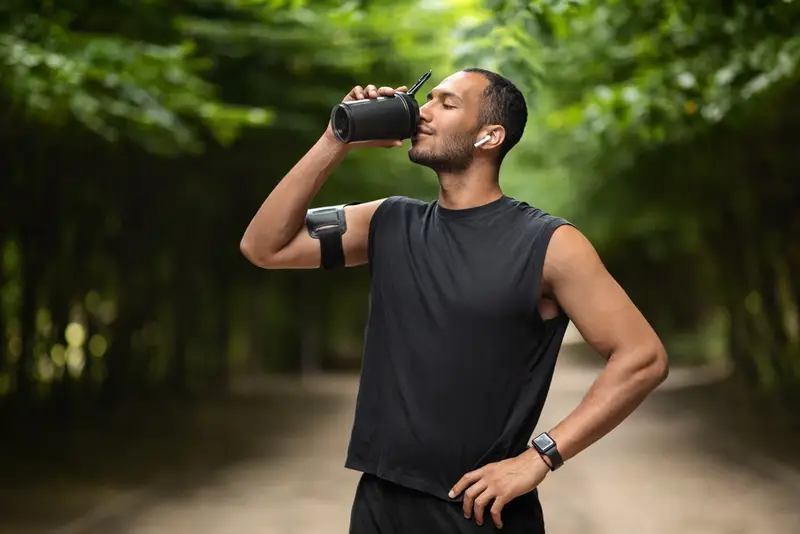
Top Electrolyte Supplements & Natural Sources
Electrolyte Supplements: Tablets vs. Powders vs. DrinksTop Picks
- Premium: Skratch Labs Sport Hydration (360 mg sodium, 20g carbs).
- Budget: Ultima Replenisher ($0.50/serving, 55 trace minerals).
- Sugar-Free: Gatorade Zero (230 mg sodium, 0g sugar).
Natural Electrolyte Sources
- Coconut Water: 600 mg potassium/cup (ideal post-yoga).
- Bananas: 422 mg potassium (perfect pre-workout snack).
- Avocado: 728 mg potassium + magnesium (add to post-lift smoothies).
DIY Electrolyte Drink:
- 1 cup orange juice (potassium) + ¼ tsp sea salt (sodium) + 1 tbsp honey (carbs) + ½ cup water.
Budget vs. Premium: What’s Worth It?
- Budget: Walmart’s Great Value Electrolyte Powder ($10 for 20 servings).
- Mid-Range: Nuun Sport ($7 for 10 tablets).
- Premium: LMNT ($45 for 30 packets, 1,000 mg sodium/serving).
Pro Tip: Heavy sweaters should invest in high-sodium options like LMNT; casual exercisers can opt for natural foods.
Common Electrolyte Mistakes to Avoid
1. Drinking Too Much Water (Hyponatremia)
- Risk: Dilutes blood sodium, causing nausea, seizures, or coma. In 2018, a marathoner died from overhydration with plain water.
- Fix: For every 16 oz water, add ¼ tsp salt or use Hydralyte tablets.
2. Using Sugary Sports Drinks for Light Workouts
- Example: Gatorade (34g sugar) for a 30-minute walk spikes insulin needlessly.
- Fix: Opt for Propel Fitness Water (0g sugar, 160 mg sodium).
3. Skipping Electrolytes on Rest Days
- Why: Muscles repair and rebuild during rest, requiring magnesium and potassium.
- Fix: Drink coconut water or bone broth on off days.
4. Cheap Supplements with Fillers
- Risk: Some Amazon brands use maltodextrin (blood sugar spike) or artificial dyes.
- Fix: Check labels for NSF Certified for Sport seals.
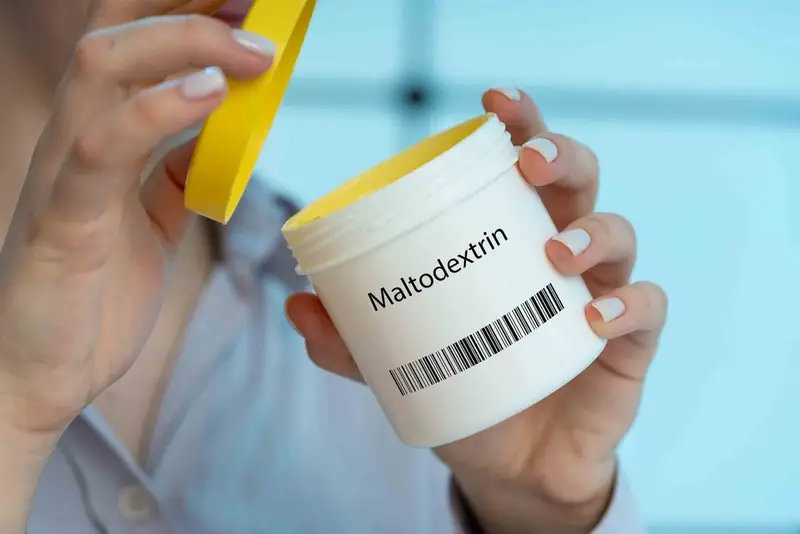
FAQs About Electrolytes and Workouts
1. “Do Electrolytes Help with Weight Loss?”
- Answer: Indirectly. Electrolytes optimize hydration, which aids metabolism. A 2022 Journal of Obesity study found hydrated individuals burned 3% more calories at rest.
2. “Are Electrolytes Safe for Pregnant Athletes?”
- Answer: Yes, but avoid excess sodium. The American Pregnancy Association recommends Harmless Harvest Coconut Water (low sodium, high potassium).
3. “Electrolytes Before Bed for Recovery?”
- Answer: Magnesium-rich options (e.g., Natural Calm) improve sleep quality and reduce next-day soreness.
4. “Can You Overdose on Electrolytes?”
- Answer: Rare, but possible. Symptoms include diarrhea (excess magnesium) or hypertension (excess sodium). Stick to RDA guidelines.
How to Create Your Electrolyte Timing Plan
Step 1: Calculate Your Sweat Rate
- Method: Weigh yourself nude pre/post 1-hour workout. Every 1 lb lost = 16 oz fluid + 500 mg sodium needed.
- Tool: Use MyFitnessPal to log sweat loss and electrolyte intake.
Step 2: Match Electrolytes to Workout TypeStep 3: Gear Up
- Hydration Belts: Nathan SpeedDraw (holds electrolyte flasks).
- Smart Bottles: HidrateSpark Pro tracks intake and reminds you to sip.
Sample Routines
- Beginner: 12 oz water + ¼ tsp salt pre-workout; coconut water post.
- Advanced: 20 oz Skratch Labs pre, 1x Nuun tablet intra, LMNT post.

Seasonal & Niche Electrolyte Tips
Summer Workouts
- Hot Yoga/Beach Runs: Pre-cool with Pedialyte Freezer Pops (sodium + zinc).
- Hydration Hack: Freeze electrolyte drinks into ice cubes for workouts.
Winter Workouts
- Skiing/Indoor Cycling: Dry air increases respiratory fluid loss. Sip DripDrop ORS (higher sodium) hourly.
Niche Cases
- VR Fitness: Biosteel Hydration Mix (light flavor, no stomach upset).
- Military Training: SaltStick Caps + 1L water every 2 hours.
- Biohackers: Add trace minerals (e.g., Quinton Hypertonic) to fasting electrolyte drinks.
Expert Recommendations & Research
Sports Nutritionist Quotes
- Dr. Stacy Sims, Ph.D.: “Women lose more sodium during luteal phase—adjust intake cyclically.”
- ISSN Guidelines: 1.7–2.9 mg sodium/lb body weight daily for athletes.
2023 Research Highlights
- Electrolyte Absorption: Chewed tablets absorb 50% faster than swallowed (University of Birmingham).
- WHO Guidelines: 2.5g potassium/day reduces stroke risk by 24%.
Conclusion
Tailor your electrolyte strategy to sweat rate (weigh-in method), workout intensity (HIIT vs. yoga), and environment (heat vs. altitude). Whether you’re a keto athlete sipping LMNT or a runner relying on Skratch Labs, smart timing unlocks peak performance.
